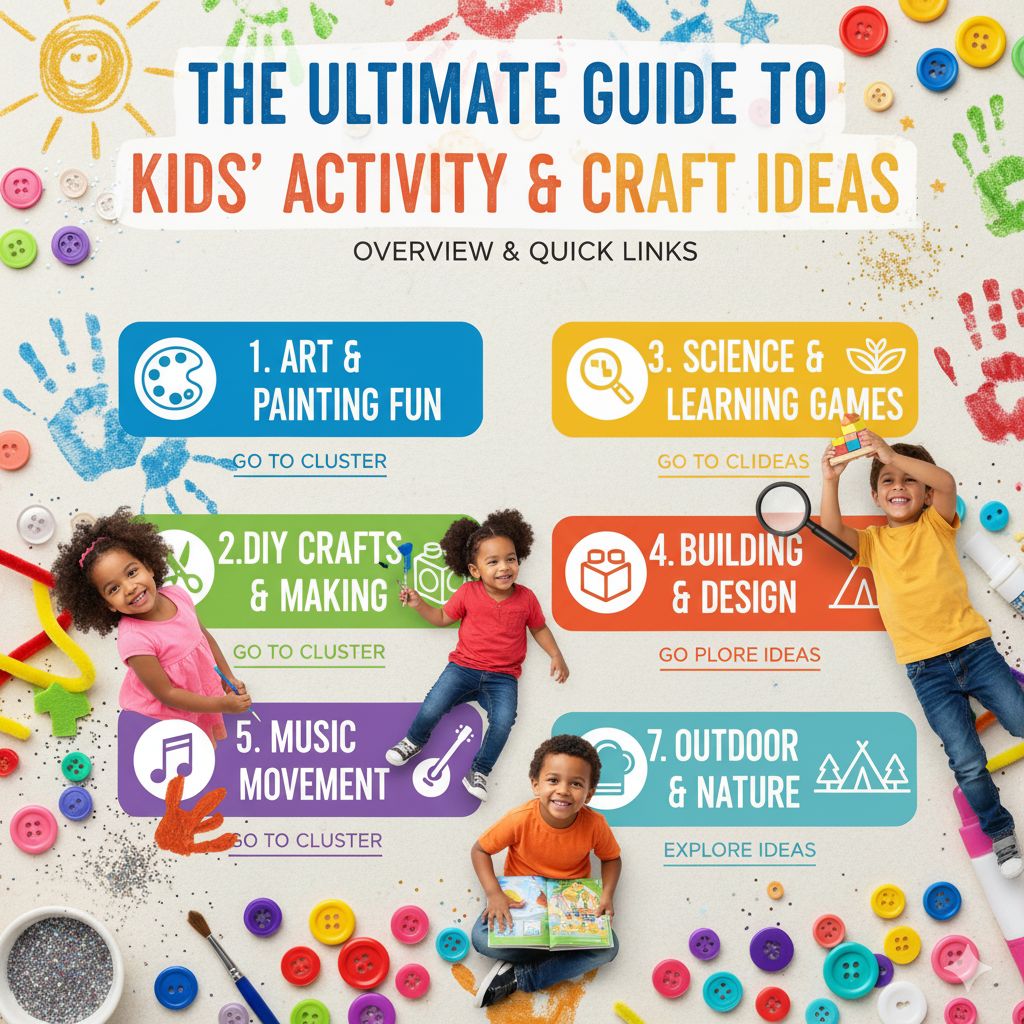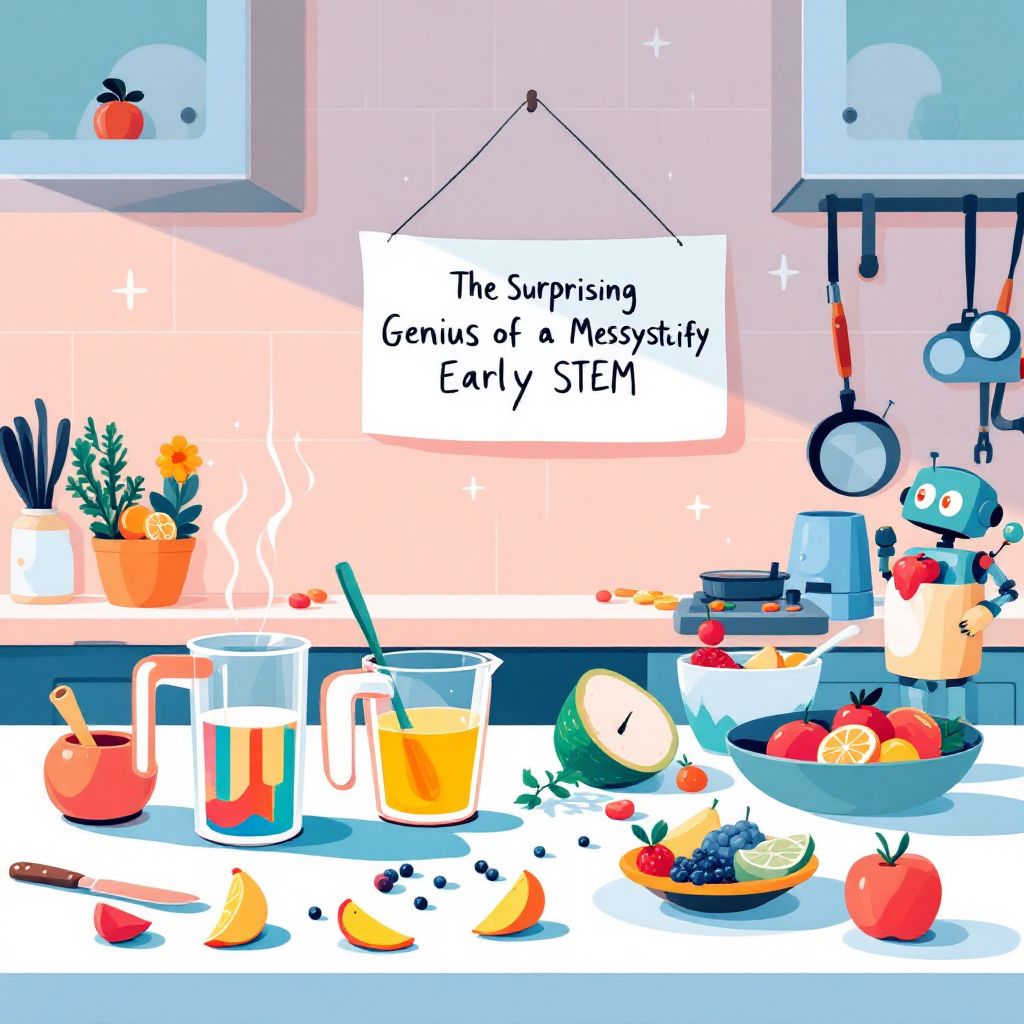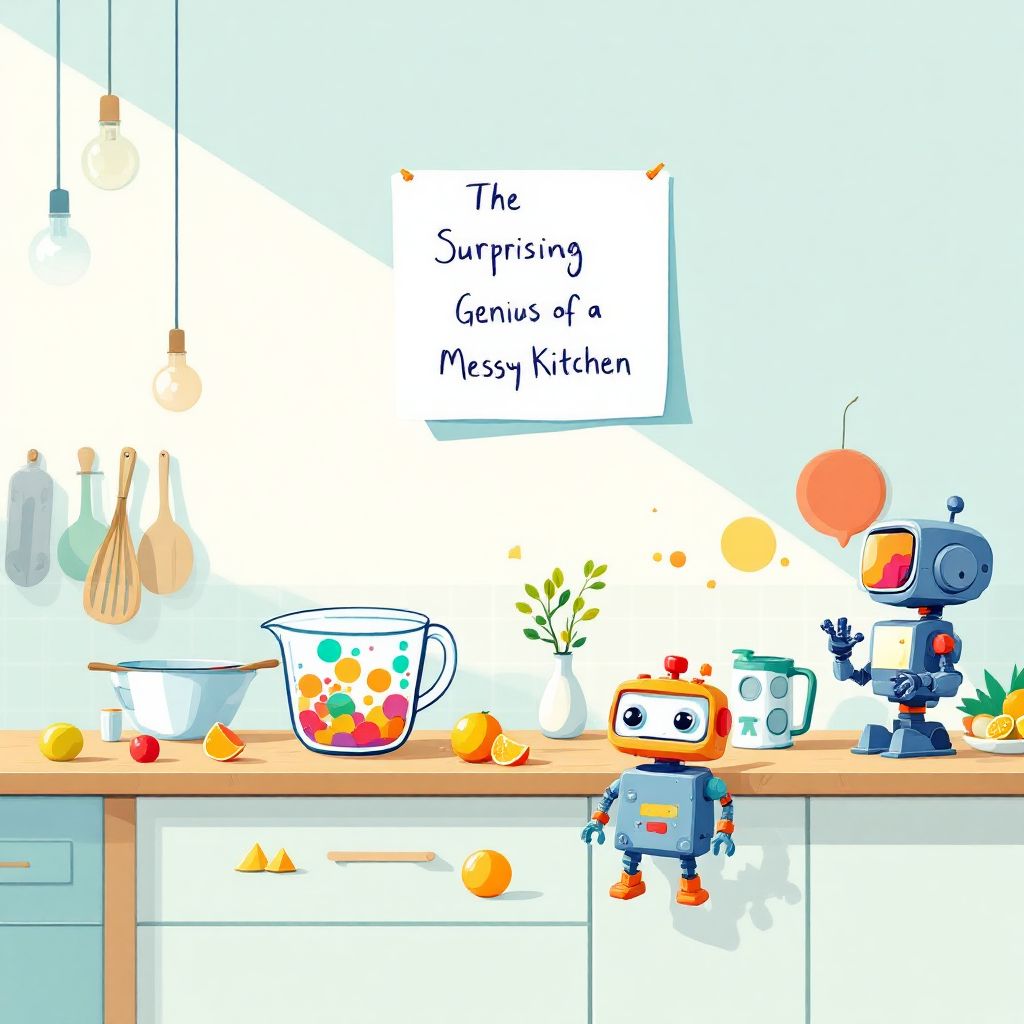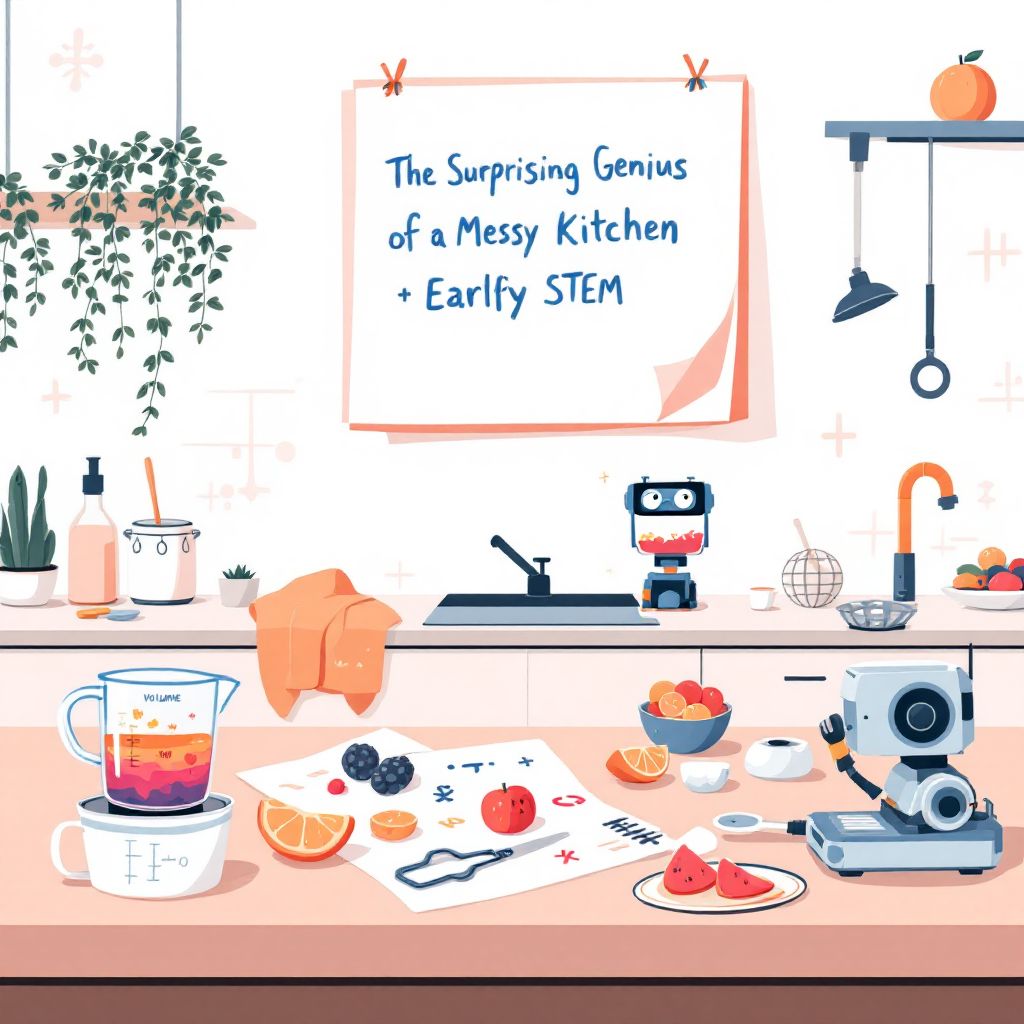- Ark's Newsletter
- Posts
- The Magic of Play: How Simple, Everyday Fun Builds a Brilliant STEM Mind for Your Child
The Magic of Play: How Simple, Everyday Fun Builds a Brilliant STEM Mind for Your Child
Introduction: Your Child, The Natural Scientist
Have you ever watched a toddler discover a puddle for the first time? They treat it like buried treasure, spending an eternity splashing, giggling, and getting completely soaked. What seems like delightful mess-making is actually intensive scientific research. That child is exploring physics, fluid dynamics, and cause and effect. They are, in their own way, a natural scientist.
This instinct to explore, question, and experiment is the very heart of STEM (Science, Technology, Engineering, and Math). For young children, STEM isn’t about memorizing formulas or sitting through formal lessons. It’s about interacting with the world, figuring out how things work, and building a foundational understanding of the principles that govern their reality—all through the power of play.
This article is designed to demystify STEM for the early years. It will show you how simple, fun, hands-on activities using everyday household items can build a powerful foundation for your child’s future learning. Let’s explore what STEM actually looks like through the eyes of a young child.

1. What is STEM for Young Children (and Why Does it Matter)?
For a preschooler, STEM is not a set of subjects but a way of thinking and interacting with the world. It’s an integrated approach to learning that encourages curiosity and creative problem-solving. Here’s a simple breakdown:
Science: The joy of asking “why?” and observing what happens.
Technology: Using simple tools to make things happen, from a spoon to a pair of scissors.
Engineering: The fun of designing, building, and figuring out how things work.
Math: Finding patterns, sorting shapes, and counting everything in sight.
The goal isn’t to teach four separate subjects but to nurture a mindset. As one study notes, “Preschoolers, like engineers, are curious, process-oriented, and creative.” By embracing this natural inclination, you help your child develop skills that will last a lifetime. Early STEM exploration offers several critical long-term benefits:
Builds Powerful Brain Architecture: During the early years, more than one million new neural connections form every second. Sensory-rich STEM play strengthens these pathways, creating the foundation for complex skills like reading, math, and problem-solving.
Improves Problem-Solving Abilities: Hands-on experimentation teaches children to form theories, test them, and learn from the results. This cycle of trial and error is the core of scientific thinking and creative innovation.
Enhances Emotional Regulation: Sensory activities, such as digging in sand or kneading dough, can have a remarkable calming effect. They help regulate a child’s nervous system, reduce stress, and provide a healthy outlet for big emotions.
Now that we understand what early STEM is and why it’s so important, let’s look at the most powerful tool for teaching it: play.

2. The Power of Play: Your Secret STEM Laboratory
A child’s most effective learning environment isn’t a classroom—it’s the playroom, the backyard, or the kitchen floor. Play is the “universal language of childhood” and the most efficient way for children to grasp complex skills easily and joyfully.
The reason play is so powerful lies in the science of sensory exploration. When a child engages in hands-on activities, they create “whole-body memories” that are the fundamental building blocks for higher-level skills like reading, mathematics, and critical thinking. This multi-sensory learning is far more effective and engaging than traditional single-sense approaches.
The best part is that you don’t need expensive kits or complicated lesson plans. As educational experts at Dibber confirm, “STEM does not have to be a big production.” Many everyday household items—from paper cups and water to buttons and cardboard—can be transformed into powerful educational tools. Your home is already a fully equipped STEM laboratory.
Here are a few simple adventures you can start right away.

3. Simple STEM Adventures You Can Try at Home
These activities are designed to be quick, low-mess, and packed with learning. They use items you likely already have and turn everyday moments into opportunities for discovery.
A. Exploring the Wonders of Science
Activity: Sink or Float?
What you’ll need:
A large bowl or tub of water
Various small household items (e.g., spoon, toy block, crayon, leaf, rock)
What to do:
Fill the bowl with water.
Gather your collection of small objects.
Before dropping each item in, ask your child to predict, “Do you think this will sink or float?”
Drop the item in and observe what happens together!
The STEM Magic:This classic game is a fun, hands-on lesson in scientific reasoning! Your child learns to make a hypothesis (a guess), conduct an experiment, and observe the results. They are exploring the concept of density—why some heavy things float and some light things sink.
Activity: Walking Water
What you’ll need:
7 clear jars or cups
Water
Food coloring (red, yellow, and blue)
6 paper towels
What to do:
Line up your 7 cups. Fill every other one with water, about three-quarters full (this means cups #1, #3, #5, and #7 will have water).
Add a few drops of red food coloring to the first cup of water (cup #1), yellow to the second cup of water (cup #3), and blue to the last cup of water (cup #7).
Fold each paper towel in half twice to create a long, thin strip.
Place one end of a paper towel strip into a cup with water and the other end into an adjacent empty cup. Continue this until all cups are connected.
Watch as the colored water “walks” up the paper towels and into the empty cups, creating new colors where they meet.
The STEM Magic:This isn’t just a rainbow; it’s a visual lesson in capillary action! The water defies gravity by traveling up through the tiny gaps in the paper towel fibers. It also provides a fantastic demonstration of primary color mixing as the different colors of water blend in the empty cups.
B. Thinking Like an Engineer
Activity: Paper Cup Tower
What you’ll need:
A bunch of paper or plastic cups
What to do:
Challenge your child to stack the cups to build the tallest tower they can without it falling over.
For an extra challenge, ask them to build a bridge between two “towers” or try to build against a timer.
The STEM Magic:This is more than stacking; it’s an introduction to structural engineering! Your child will naturally discover that a wider base creates more stability and that careful placement is key to building higher. They are learning about balance, design, and gravity through hands-on problem-solving.
Activity: Cardboard Ramp Races
What you’ll need:
Leftover cardboard sheets or wooden planks
Blocks or books to create height
Toy cars or pom-poms
What to do:
Use books or blocks to prop up one end of a piece of cardboard, creating a ramp.
Let your child race their toy cars down the ramp.
Experiment by changing the angle of the ramp. What happens if it’s steeper? What if it’s longer?
The STEM Magic:This simple race is a dynamic physics lesson in action! Your child gets to see how gravity pulls objects down a slope and how the angle of the ramp affects speed. It’s a playful way to explore core concepts like force, motion, and incline.
C. Playing with Math
Activity: Sorting Buttons
What you’ll need:
A collection of buttons of various shapes, sizes, and colors
What to do:
Pour the buttons onto a tray or flat surface.
Ask your child to sort them into groups based on similarities. They might sort by color, size, shape, or the number of holes.
Once sorted, count how many buttons are in each group.
The STEM Magic:This isn’t just busy work; it’s building a foundation for numeracy! Sorting helps children develop logical thinking and pattern recognition skills. Counting the groups reinforces one-to-one correspondence, a critical early math concept.
These activities are just the beginning. The real magic happens when you adopt a mindset of curiosity that you can apply to almost any situation.
4. How to Foster a Lifelong Love of Discovery
Your role isn’t to be a teacher who has all the answers. Instead, think of yourself as a co-discoverer, exploring alongside your child. Your curiosity is contagious. Here are a few simple ways to encourage a STEM mindset every day:
Ask Open-Ended Questions Instead of asking questions with a simple “yes” or “no” answer, prompt deeper thinking. Try questions like, “What do you think will happen if we…?” or “Why do you think it did that?” These questions invite your child to form theories and share their reasoning without fear of being wrong.
Celebrate the Process, Not Just the Result In science and engineering, “failures” are just data. When a tower falls or an experiment doesn’t go as planned, celebrate the effort and the learning opportunity. Trial-and-error is the heart of discovery. This captures the resilient mindset a researcher observed in one preschooler, who said after a building challenge, “…we need to keep trying because engineers never give up!”
Connect STEM to Everyday Life Point out the science, math, and engineering happening all around you. When you’re cooking, talk about how heat changes food and let your child help with culinary measurements. During bath time, explore why some toys sink and others float. These small connections show your child that STEM is not just a school subject—it’s woven into the fabric of their world.
5. Conclusion: You’ve Got This!
Building a brilliant STEM mind doesn’t require fancy equipment, expensive classes, or a degree in physics. It starts with honoring your child’s natural curiosity and giving them the freedom to explore.
For young children, STEM is simply joyful, hands-on exploration. Play is the most powerful brain-building tool they have, and as a parent, you already have everything you need to get started. By asking questions, celebrating the process, and turning everyday moments into mini-adventures, you are giving your child the greatest gift of all: a lifelong love of learning and a mind ready to take on the world. The truth is, you’re likely already doing it.
